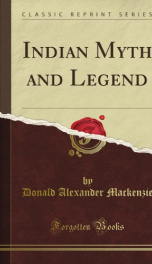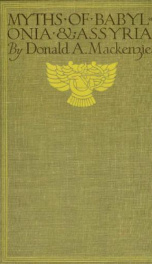indian myth and legend

The triangular sub-continent of India is cut off from the rest of Asia by the vast barriers of the Himalayas, the Hindu Kush, the Suleiman mountains, and the Indian Ocean. Its population comprises about two hundred and ninety-five millions, and is of greatest density on the fertile northern plain, which is watered by three river systems, the Indus and its tributaries on the west, and the Ganges and Brahmaputra with their tributaries which pour into the Bay of Bengal. South of the Vindhya mountain ranges is the plateau of the Deccan. The climate varies from temperate on the Himalayan slopes to tropical in southern India, and over the entire country there are two pronounced annual seasons, the dry and the rainy.Our interest abides in this volume chiefly with the northern plain and the people who are familiar in varying degrees with the sacred and heroic literature passed under review; that is, with the scenes of the early Indian civilization known as Aryan and those numerous inheritorsTable of Contents Introduction ------- xvn; I Indra, King of the Gods ----- i; II The Great Vedic Deities ----- 19; III Yama, the First Man, and King of the Dead - 38; IV Demons and Giants and Fairies - - - - 61; V Social and Relicious Developments of the Vedic; Age --------76; VI Mysteries of Creation, the World's Aces, and; Soul Wandering ------ 0,7; VII New Faiths: Vishnu Relicion, Buddhism, and; Jainism - - - - - - - -119; VIII Divinities of the Epic Period - 138''; IX Prelude to the Great Bharata War- - 157; X Roval Rivals: the Pandavas and Kauravas - - 173; XI The Tournament 185; XII First Exile of the Pandavas - - - 195; XIII The Choice of Draupadi - - - - - 213; XIV Triumph of the Pandavas ----- zz
Info about the book
Author:
Series:
Unknown
ASIN:
B0038QQCYG
Rating:
4.5/5 (3)Your rating:
0/5
Languge:
English
Users who have this book
Users who want this book
What readers are saying
What do you think? Write your own comment on this book!
write a commentGenre
if you like indian myth and legend try:
Do you want to exchange books? It’s EASY!
Get registered and find other users who want to give their favourite books to good hands!






